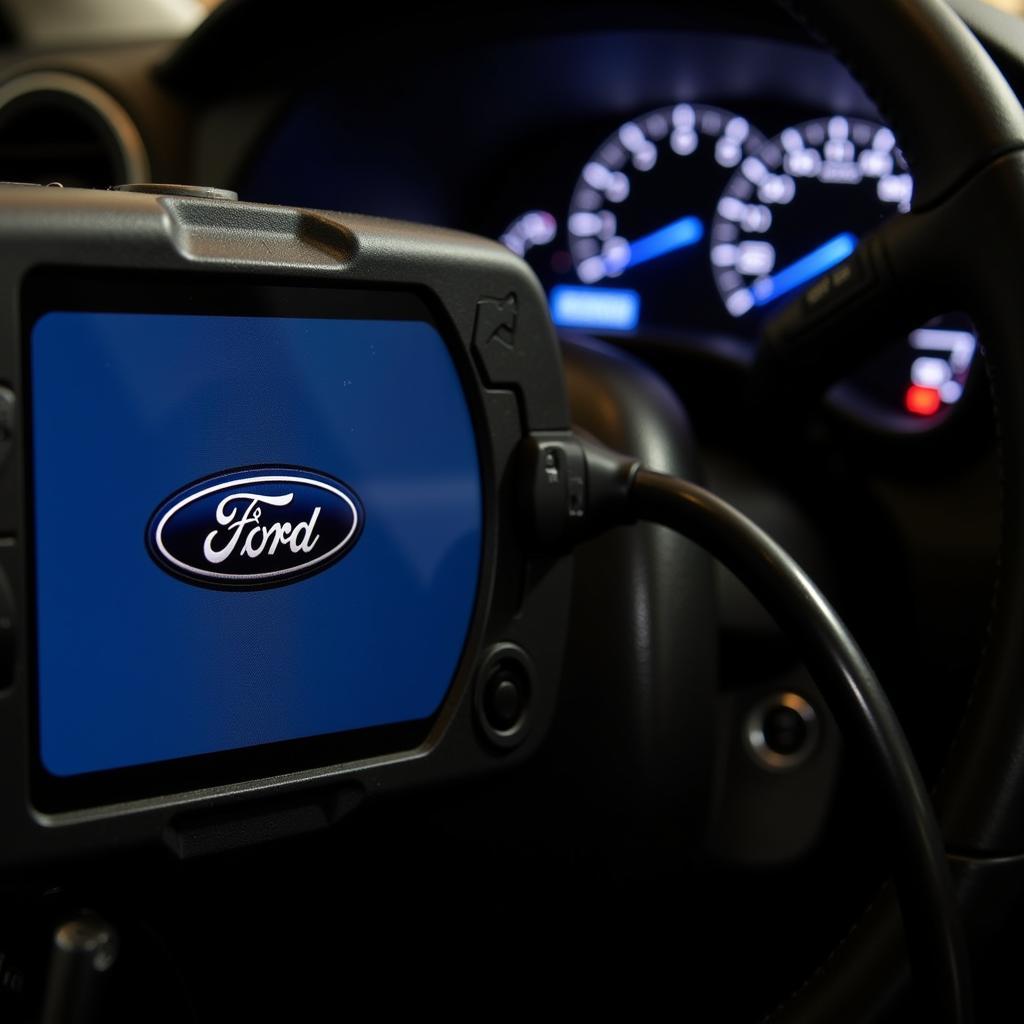If you’re a Ford owner and have encountered the cryptic “10 S21 Component Fail” message on your OBD2 scanner, you’re not alone. This frustrating error code can indicate a range of issues, leaving you unsure of the culprit behind your vehicle’s malfunction. This article will delve into the meaning of the “Ford OBD2 10 S21 Component Fail” code, its common causes, and practical solutions to get you back on the road.
The OBD2 (On-Board Diagnostics) system in your Ford is designed to monitor various systems and components, alerting you to potential problems through specific codes. The “10 S21 Component Fail” code signifies a communication breakdown between the vehicle’s computer (PCM) and a specific module or component labeled “S21”. This communication failure can disrupt the functionality of the affected component, leading to performance issues, warning lights on your dashboard, or even a complete system shutdown.
Decoding the “10 S21 Component Fail” Code
To effectively troubleshoot this OBD2 code, it’s crucial to understand its components:
- 10: This typically refers to a communication error within the vehicle’s network.
- S21: This designation points to a specific component or module, which varies significantly depending on your Ford model and year.
Common components associated with the “S21” designation include:
- Transmission Control Module (TCM): This module manages the automatic transmission’s shifting patterns and other functions.
- Anti-lock Braking System (ABS) Module: This critical safety system prevents wheel lockup during braking.
- Body Control Module (BCM): This module controls various body functions, including lighting, power windows, and central locking.
- Instrument Cluster Module: This module displays vital information to the driver, such as speed, fuel level, and warning lights.
Common Causes of “Ford OBD2 10 S21 Component Fail”
Pinpointing the exact cause of this OBD2 code requires further diagnosis, but some common culprits include:
- Wiring Issues: Damaged, corroded, or loose wiring within the CAN bus system (the communication network connecting various modules) can disrupt the signal flow and trigger the “10 S21” code.
- Faulty Module: The “S21” component itself may have malfunctioned due to internal electrical issues, software glitches, or physical damage.
- Blown Fuse: A blown fuse related to the “S21” component or the communication network can cause a communication breakdown.
- Low Battery Voltage: Insufficient battery voltage can disrupt the operation of electronic modules, leading to communication errors.
Troubleshooting and Solutions
Resolving the “Ford OBD2 10 S21 Component Fail” code often involves a systematic approach to identify and address the root cause:
- Check the Battery: Begin by ensuring your Ford’s battery is fully charged and connections are secure. A weak battery can cause unpredictable electrical behavior.
- Inspect Fuses: Consult your Ford’s owner’s manual to locate the fuse box and identify the fuse associated with the “S21” component. Check for a blown fuse and replace it if necessary.
- Visual Inspection: Carefully examine the wiring harness and connectors related to the “S21” component for any visible damage, corrosion, or loose connections. Repair or replace any faulty wiring.
- Advanced Diagnostics: If visual inspection and basic checks don’t pinpoint the problem, advanced diagnostics using a professional-grade OBD2 scanner are recommended. This allows you to access live data streams, perform module-specific tests, and pinpoint the faulty component.
- Module Replacement: If a faulty module is identified as the culprit, replacement is usually the most effective solution. Ensure the replacement module is compatible with your Ford model and year.
Expert Insight: “Many vehicle owners underestimate the importance of regular battery maintenance,” says John Smith, ASE Certified Master Technician. “A weak battery can lead to a cascade of electrical issues, including communication errors between modules, triggering various OBD2 codes.”
Frequently Asked Questions (FAQs)
Q1: Can I drive my Ford with the “10 S21 Component Fail” code?
A: It depends on the severity of the issue. If you experience performance problems, warning lights, or unusual behavior, it’s best to avoid driving and seek professional diagnosis and repair. Driving with a potentially serious issue can lead to further damage.
Q2: How much does it cost to fix the “10 S21 Component Fail” code?
A: Repair costs vary widely depending on the root cause. A simple fuse replacement might cost under $50, while a faulty module replacement can range from a few hundred to over a thousand dollars.
Q3: Can I fix the “10 S21 Component Fail” code myself?
A: While basic checks like battery and fuse inspection are manageable for DIY enthusiasts, more complex diagnostics and repairs often require specialized tools and knowledge. It’s generally advisable to seek professional help for accurate diagnosis and repair.
Conclusion
The “Ford OBD2 10 S21 Component Fail” code signals a communication breakdown within your vehicle’s intricate network. By understanding its meaning, common causes, and employing a systematic troubleshooting approach, you can effectively address this issue. While basic checks can be performed at home, professional diagnosis using a high-quality OBD2 scanner is often crucial for accurate identification and repair. Remember, addressing the problem promptly can prevent further damage and ensure your Ford’s optimal performance and safety.


